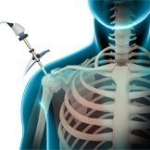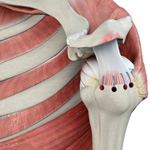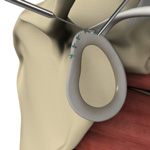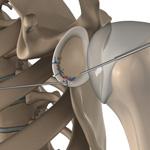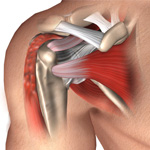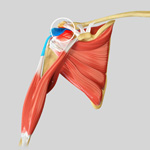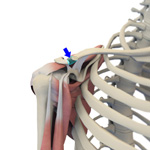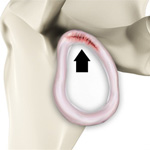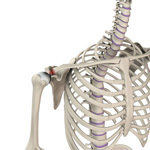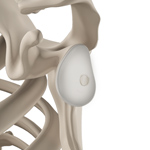Procedures
Shoulder Arthroscopy
Arthroscopy is a minimally invasive diagnostic and surgical procedure performed for joint problems. Shoulder arthroscopy is performed using a pencil-sized instrument called an arthroscope. The arthroscope consists of a light system and camera to project images onto a computer screen for your surgeon to view the surgical site. Arthroscopy is used to treat disease conditions and injuries involving the bones, cartilage, tendons, ligaments, and muscles of the shoulder joint.
Rotator Cuff Repair
The rotator cuff is a group of tendons in the shoulder that provide support and enable a wide range of motion of the shoulder joint. Major injuries can cause rotator cuff tears. A rotator cuff tear is one of the most common causes of shoulder pain in middle-aged adults and older individuals.A rotator cuff tear may occur with repeated use of the arm for overhead activities, while playing sports or during motor accidents.
SLAP Repair
A superior labrum anterior and posterior tear or SLAP tear is an injury to the labrum. This injury may also involve the biceps tendon, which is attached to the top part of the labrum. The injury occurs from repeated use of the shoulder while throwing or a fall onto the shoulder. A SLAP tear can be treated through an arthroscopic surgical procedure called a SLAP repair.
Bankart Repair
A specific type of labral tear that occurs when the shoulder dislocates is called a Bankart tear. This is a tear to a part of the labrum called the inferior glenohumeral ligament and is common in younger patients who sustain a dislocation of the shoulder.A Bankart tear makes the shoulder prone to repeat dislocation in patients under 30 years of age.
Biceps Tenodesis
Proximal biceps tenodesis is the surgical reattachment of a torn proximal biceps tendon, which connects the upper part of your biceps muscle to the shoulder.
Sub-acromial Decompression
Subacromial decompression surgery is performed to treat shoulder impingement, one of the most common causes of shoulder pain. Shoulder impingement causes the bones and tendons of the shoulder to rub painfully against each other when the arm is raised.The acromion is a bony projection of the shoulder blade that forms a roof over the shoulder joint.
Distal Clavicle Excision
Distal clavicle excision is a procedure which involves removal of the outer end of the clavicle (collarbone) to treat shoulder pain and disability due to arthritis or impingement.The shoulder is formed by three bones, the humerus (upper arm bone), scapula (shoulder blade) and clavicle (collar bone).
Labral Repair
The shoulder joint is a ball and socket joint. A 'ball' at the top of the upper arm bone (the humerus) fits neatly into a 'socket', called the glenoid, which is part of the shoulder blade (scapula). The labrum is a ring of fibrous cartilage surrounding the glenoid, which helps in stabilizing the shoulder joint. The biceps tendon is attached inside the shoulder joint at the superior labrum of the joint.
Acromioclavicular Joint (AC) Joint Reconstruction
The acromioclavicular (AC) joint is one of the joints present within your shoulder. It is formed between a bony projection at the top of the shoulder blade (acromion) and the outer end of the clavicle (collarbone). The joint is enclosed by a capsule and supported by ligaments.Capsular ligaments are called the acromioclavicular ligaments.


